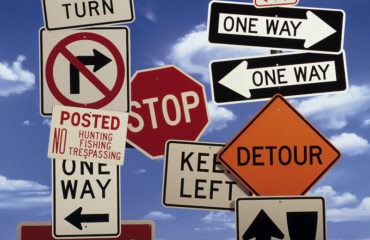“Speeding” and “Teenagers.” Individually each has a potential risk, but when combined together, the danger on our highways grows exponentially. Do you know what you can do to make a difference?
This article will review the facts and provide a few tips on what we can do to make sure that more teens are not killed speeding down the highway.
A recent report released by the Governor’s Highway Safety Association (GHSA) highlights speeding as the primary cause for over 900 teenagers dying in car crashes in 2011.[1] Overall, motor vehicle crashes are the leading cause of death for teens ages 15-20,[2] and speeding accounts for one-third of those fatalities.[3]
Risk Factors for Teens
In looking at the fatalities, a few critical factors stand out. First, when a teenager is driving with other teens in the car, as opposed to driving alone, the percentage of speeding-related fatal crashes jumps to as high as 50%. Second, when a teen is driving at night, there is also a dramatic upswing in the percentage of speeding-related fatal crashes.[4]
The GHSA report noted that many times these crashes are single vehicle crashes where the teen driver lost control while speeding. For example, 53% of single vehicle fatal crashes with a 16-year-old as the driver were speeding-related. [5] Is this significant? Absolutely, drivers with more experience (i.e. older drivers), have significantly lower percentages.
The fact that age and experience make a difference should not surprise any parent with a teenage driver who has paid car insurance. Insurance companies routinely charge higher rates when a teenager is a driver of a car: the research clearly shows that the experience, or in this case, inexperience of the driver is a key factor in driving safely. The same is true when young drivers are speeding. Speeding by itself is dangerous. When inexperienced drivers are added to the mix, you get the results demonstrated by the GHSA report—a high percentage of teen motor vehicle deaths.
Making Safer Teen Drivers
Have we as a society gotten better on changing the dynamics of inexperience and driving? Yes, with GDL or Graduated Drivers Licenses now common across the country, states are demanding teenagers get more experience at driving before receiving a full license. A GDL sets restrictions for new drivers, for example, not being allowed to drive at night or drive with other teens in the car. Interestingly, those two restrictions correlate to important factors for teenagers and speeding. Research has confirmed that GDL restrictions have made a difference; they have improved road safety and saved lives.
Another important solution is the teen’s parents. In a survey of parents of young drivers, more than half said they wanted to know if their son or daughter was speeding. Yet, parents are reluctant to use a variety of available tools for fear of violating the teen’s trust or privacy.[6] That attitude must change. We need to remember that while trust must exist within a family, there also have to be rules and an understanding that the rules must be followed. Parents need to understand that monitoring their teen’s driving is to protect the teen and make sure he or she learns the proper skills over time. Driving is a complicated skill that takes time and practice to be proficient. Parents must tackle the attitudes of risk taking and following traffic laws with the young driver and once the teenager has proven himself, then he can be allowed more freedom.
5 Tips for Parents
Parents should consider these 5 tips[7] when they have young drivers in the household:
- Have several serious discussions about the importance of following all traffic laws, establish family rules and consequences for breaking laws and be a role model by leading by example.
- Avoid allowing teens to have primary access to a vehicle for at least the first year of independent driving.
- When choosing a car for a teen driver, make safety the primary consideration.
- Consider the various options for in-vehicle speed monitoring devices either in the after-market or as original vehicle equipment.
- Determine if your insurance company will provide an incentive-based program which monitors usage, braking/acceleration, and/or speed.
A variety of options are available to improve road safety for young drivers. But one of the most important considerations is that we as a society take this life threatening activity seriously. We routinely talk to teenagers about the dangers of impaired driving or texting while driving. It is time to add speeding to the discussion: in our legislatures, in our communities, in our schools and in our homes.
[1] Speeding-Related Fatal Crashes Among Teen Drivers and Opportunities for Reducing the Risks. Susan Ferguson, PhD, Governors Highway Safety Association, 2013.
[2] Young Drivers, 2011 Data. Traffic Safety Facts, National Highway Traffic Safety Administration, DOT HS 811 744.
[3] Speeding-Related Fatal Crashes Among Teen Drivers and Opportunities for Reducing the Risks. Susan Ferguson, PhD, Governors Highway Safety Association, 2013.
[4] Speeding-Related Fatal Crashes Among Teen Drivers and Opportunities for Reducing the Risks. Susan Ferguson, PhD, Governors Highway Safety Association, 2013.
[5] Speeding-Related Fatal Crashes Among Teen Drivers and Opportunities for Reducing the Risks. Susan Ferguson, PhD, Governors Highway Safety Association, 2013.
[6] Speeding-Related Fatal Crashes Among Teen Drivers and Opportunities for Reducing the Risks. Susan Ferguson, PhD, Governors Highway Safety Association, 2013.
[7] The tips are discussed in more detail in the GHSA report. This summary was provided in the GHSA press release on the report, dated June 25, 2013.
Related articles
- Speed a Factor in One-Third of Deadly Crashes Involving Teen Drivers (nlm.nih.gov)
- Speed a Factor in One-Third of Deadly Crashes Involving Teen Drivers (news.health.com)
- Report: Maryland Teen Drivers Are At Risk: How to Encourage Safe Teen Driving (local.allstate.com)
- Study: Parents forgetting about speed with teen drivers (click2houston.com)







